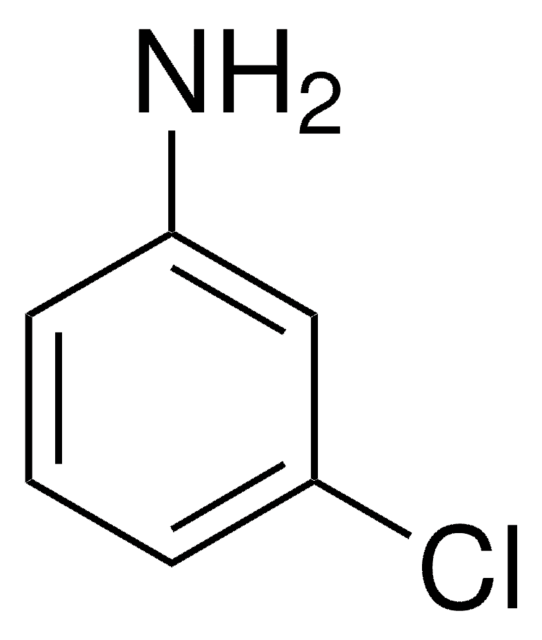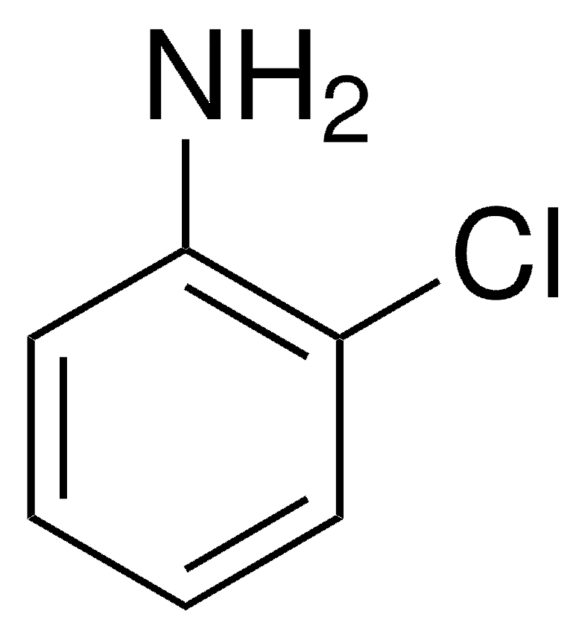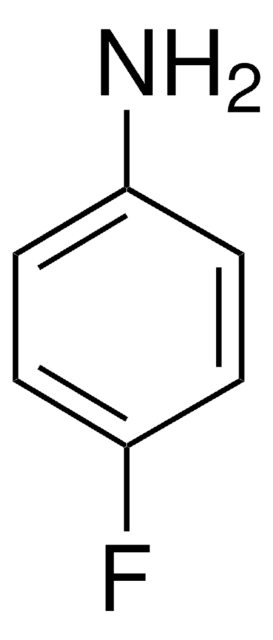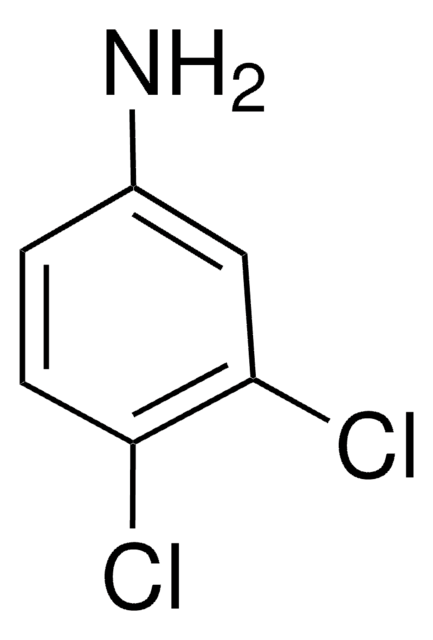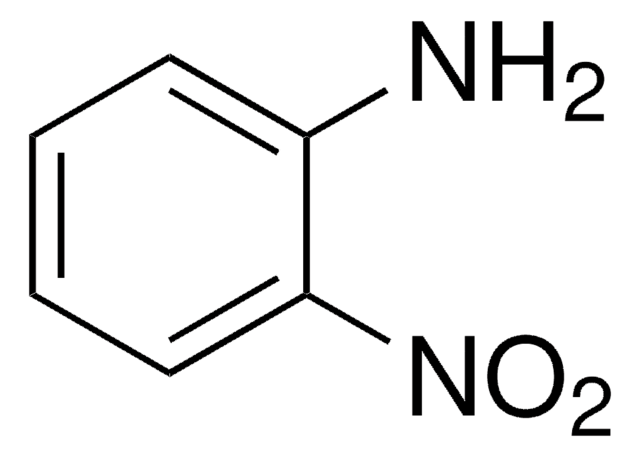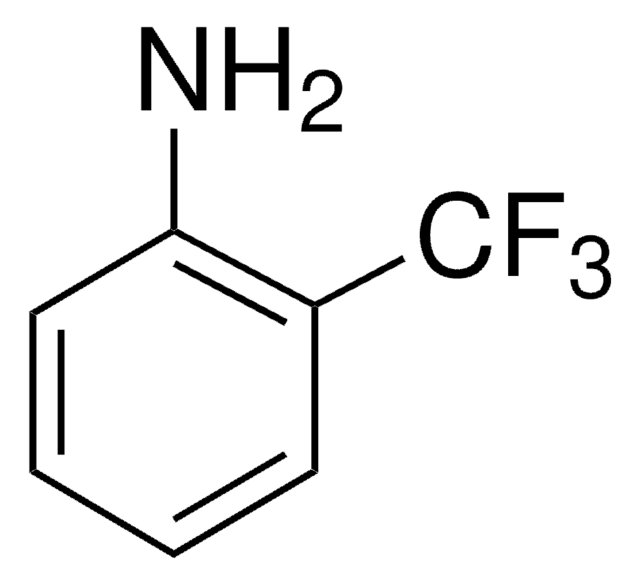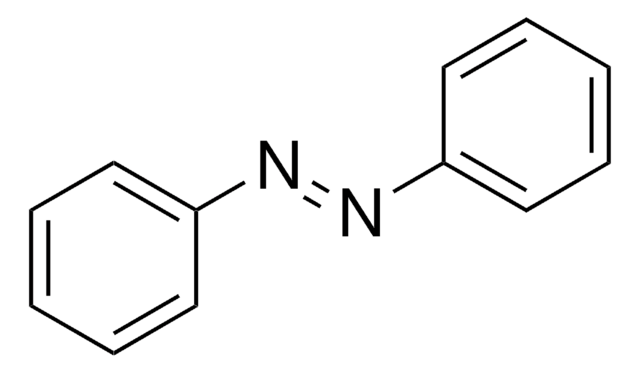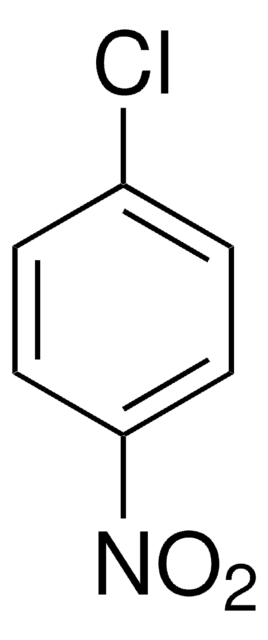About This Item
Recommended Products
Quality Level
Assay
≥99.5% (GC)
form
liquid
refractive index
n20/D 1.589
bp
208-210 °C (lit.)
mp
0-3 °C
solubility
water: soluble 5.13 g/L at 20 °C
density
1.213 g/mL at 25 °C (lit.)
SMILES string
Nc1ccccc1Cl
InChI
1S/C6H6ClN/c7-5-3-1-2-4-6(5)8/h1-4H,8H2
InChI key
AKCRQHGQIJBRMN-UHFFFAOYSA-N
Looking for similar products? Visit Product Comparison Guide
General description
Signal Word
Danger
Hazard Statements
Precautionary Statements
Hazard Classifications
Acute Tox. 3 Dermal - Acute Tox. 3 Inhalation - Acute Tox. 3 Oral - Aquatic Acute 1 - Aquatic Chronic 1 - Eye Irrit. 2 - Muta. 2 - STOT RE 2
Storage Class Code
6.1A - Combustible acute toxic Cat. 1 and 2 / very toxic hazardous materials
WGK
WGK 3
Flash Point(F)
221.0 °F - closed cup
Flash Point(C)
105 °C - closed cup
Personal Protective Equipment
Choose from one of the most recent versions:
Already Own This Product?
Find documentation for the products that you have recently purchased in the Document Library.
Customers Also Viewed
Protocols
Protocol for GC Analysis of Anilines on Equity®-5
Our team of scientists has experience in all areas of research including Life Science, Material Science, Chemical Synthesis, Chromatography, Analytical and many others.
Contact Technical Service
